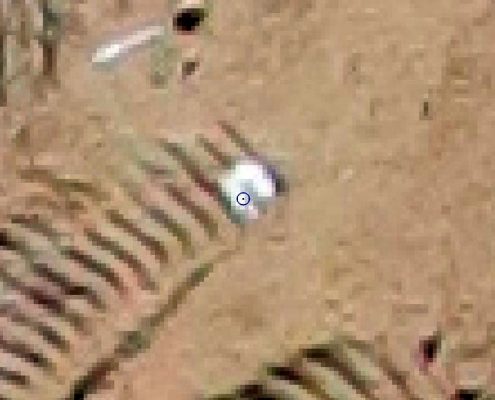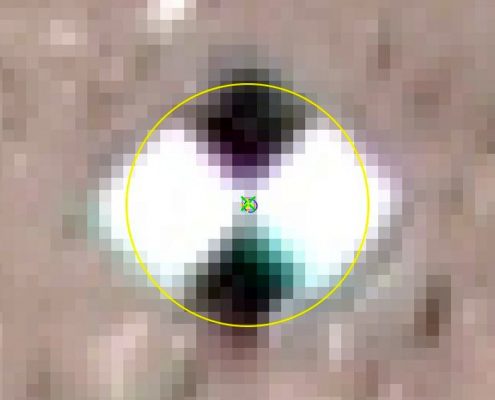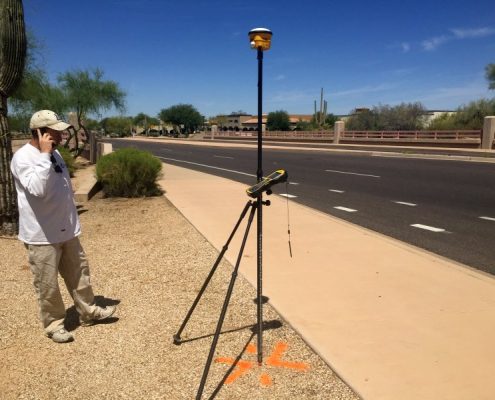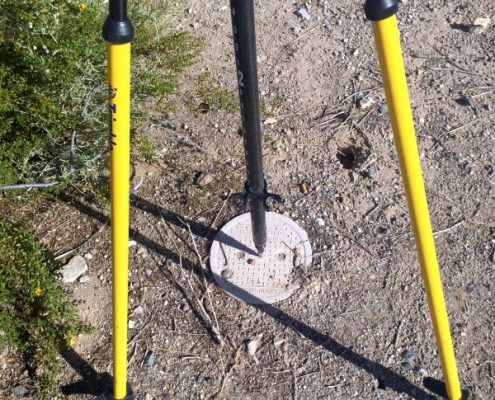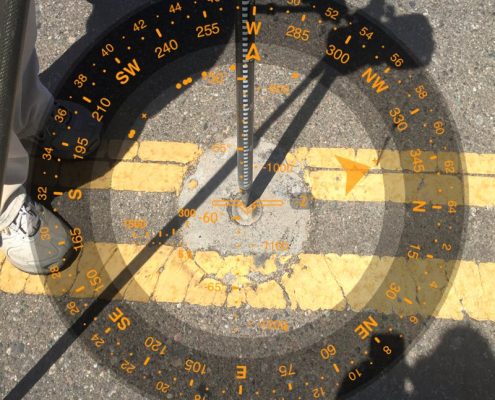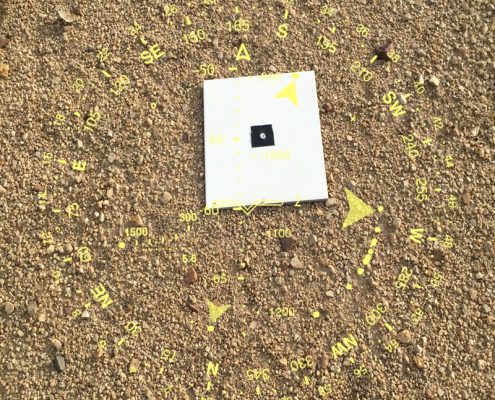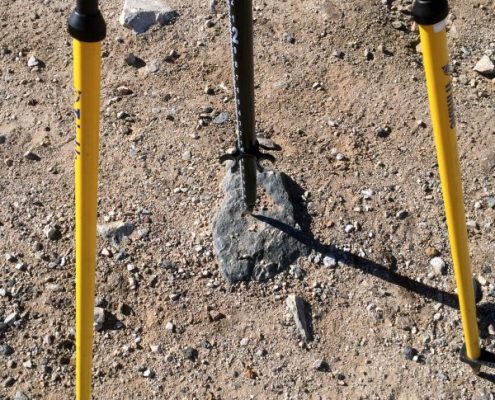Guidelines for Setting Ground Control Points
Ground control is the foundation for absolute accuracy when using SfM photogrammetry. While it consumes considerable time and effort, it is essential for not only georeferencing the calculated 3D surface, but more importantly for checking that the final surface is accurate to project requirements. At a minimum, 3 GCPs are required to reference the project. Accuracy improves as more GCPs are added to the project, with diminishing returns occurring after 9 GCPs. The quality of each GCP is also important, as small errors will propagate throughout the surface. For sites less than 100 acres, we typically use 30 GCPs. 10 are used for reference the SfM derived surface, and the remainder are used as 3D checkpoints. We typically add additional static topo and auto topo points for additional accuracy checks in the finished surface. It is important to note, that more accuracy is lost after decimation and TIN generation in software such as Civil 3D. Having a good set of reference data is essential to maintaining high confidence in the accuracy of the final surface. ASPRS standards use a minimum of 20 checkpoints to ensure statistical accuracy when calculating accuracy. After looking at hundreds of datasets, I have come to the conclusion that more data is always better when it comes to GCPs. When we set the tiles, we don’t go and set 30 tiles, we go until we are out of time. Out of tiles, add static topo….
Ten rules of setting GCPs
- They must encompass the area perimeter
- They must be visible from the sky and at as high an oblique angle as possible
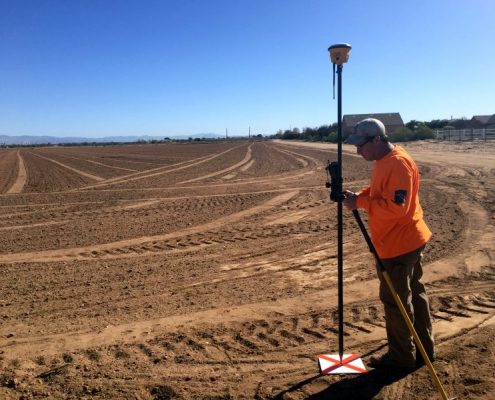
- Avoid setting them in shadows.
- Set them on level ground where possible
- Interior GCPs should be spaced as evenly as practical across the site
- Set them on the high and low ground.
- Avoid placing them in a straight line and in areas where water flows in a rain storm.
- Look for opportune aerial targets – sewer lids, valve covers, street markings.
- In areas of dense vegetation, or “dark” areas, add additional topo points for surface construction. The system can’t map what it can’t see.
- After all the effort to do a site calibration and mark the GCPs, might as well grab some additional points as insurance.
The last point drives some of my surveyor pals nuts. “I thought we hired you so we won’t have to do this” The fact is high-accuracy surfaces require a blended solution of traditional surveying and photogrammetry. Several drone manufacturers are advertising systems that employ RTK or PPK and state that they don’t need ground control. Even if this is true (standby for another post) how will you prove that your surface is accurate? The majority of the GCPs and topo points that we shoot are for analysis of the final surface in a statistically defensible report.
Panel Selection
For most jobs where the mapping is to be completed in 3-6 months we recommend 12″ black and white checkerboard tiles available from Amazon for about 50 cents a piece. We secure the tile to the ground using a galvanized 6″ to 8″ spike driven through the center. The downside to these tiles is that they will begin to curl and brown after 3 months of the Arizona summer sun and that they tend to pick up dust and dirt after rains. 
For long-term job sites, we recommend using a 12″ – 18″ white ceramic tile. We purchase these at Home Depot for about a $1/each. We drill a hole in the middle using a ceramic bit and secure it with the same spike. There are two key advantages to the ceramic tile. First, it is frangible. If a truck or goes over it, it will break and be evident in the photos. Secondly, they stay clean out in the dirt. On the down side, they are HEAVY, and they don’t have good lines marking dead center, so black duct tape is usually added from corner to corner across the center, but they are still effective without the tape. We have ceramic tiles that are still perfectly placed and visible after two years in the field.
General visibility
The planned ground sample distance is critical for the tile selection. A 12″ tile works well with GSDs up to 5cm. For our drone operations we are typcially between 1 to 3 cm, the helicopter from 2-4 and the airplane from 2-20. Above 5cm, 18″ ceramic tiles are very effective. Black and white paint works well on certain surfaces as well. High contrast between white and black is best.

